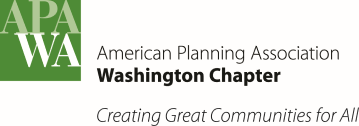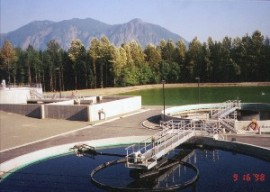- About Us
- Events & Training
- Professional Development
- Sponsorship
- Get Involved
- Resources
Sustainable Washington3.4 Waste ManagementHow much we reduce and how we manage our waste impacts green house gas emissions, especially methane – one of the most potent greenhouse gases (Methane has a radiative forcing factor of about 21 times that of CO2). Methane emissions from our landfills and wastewater treatment plants constitute a significant portion of total GHG emissions. For the United States as a whole, landfills account for 26% of total U.S. methane emissions - the second largest source of these emissions. If separated from the waste stream and combusted as a fuel, methane can serve as an asset – a source of energy rather than a greenhouse gas liability. Converting to systems that encourage the reuse of products and the recovery of useful materials from solid waste and wastewater – rather than just disposing of these materials – can help reduce GHG emissions and provide new opportunities for resource efficiency. Over the last several years, many communities have worked diligently to reduce the volume of material sent to solid waste landfills. Public agencies, businesses, local residents, and waste haulers have all recognized the need to “Reduce, Reuse and Recycle.” The development of our recycling infrastructure is an example of successfully addressing a waste management issue. But substantial volumes of material are still hauled to ever more distant landfills. In the Puget Sound area, more than 30 rail cars per day are hauled nearly 200 miles to Roosevelt Regional Landfill in Klickitat County. The Zero-Waste, and Cradle-to-Cradle Design movements stress the need to produce goods in a manner that considers the entire life-cycle of a product as a closed loop system that uses fewer raw materials and sends no waste to landfills. In this scenario, all production materials would either return as reusable or recycled materials or would be suitable for use as compost. Designing and manufacturing products that respect biological and technical life cycles reduce GHG emissions and conserves energy – including the embodied energy required to create highly refined materials from raw materials. ActionsThe following list of actions is separated into three categories: Getting Started, Making a Commitment, and Expanding the Commitment. This graduated approach allows jurisdictions to implement measures that are appropriate to their community’s current level of involvement in climate change and sustainability issues and in consideration of locally adopted plans, codes, regulations, policies and goals. Getting Started3.4.1 Evaluate local waste and wastewater treatment processesEvaluate the waste and wastewater treatment processes in your community. The first step in any waste reduction or recycling program is to understand how your community and businesses in your community function. How much waste is created? How is this waste removed and processed? How much energy is consumed by these processes? What are the GHG emissions consequences of these processes? (Local and Regional Actions) 3.4.2 Educate local consumers.Educate local residents and business owners to recognize the value of waste prevention – not creating waste in the first place – and promote waste prevention. Discourage the use of disposable products and encourage a reduction in the amount of material used and/or the toxicity of the material used to create a product or its packaging. Encourage the purchase of repairable, refillable, durable products that result in a longer useful life. (Local and Regional Actions) The Life Cycle of Plastic Water Bottles 3.4.3 Encourage “reuse” of products.Encourage material Reuse Centers, thrift shops and local resale events and programs that provide a mechanism to pass on still useful, discarded products in their original form to those who can use them. Maintain appropriate zoning to enable these centers to remain in areas conveniently accessible by city residents. (Local action) 3.4.4 Provide convenient opportunities for recycling waste.Within urban areas, institute mandatory curbside recycling for single-family and multi-family residences, and mandatory recycling (with curbside pick-up or private hauling) for businesses and commercial uses. Within rural areas, the focus may be on staffed collection centers, education, and collective marketing of the recycled materials. (Local Action) 3.4.5. Provide disposal opportunities for difficult items.For items difficult to recycle – batteries, electronic waste (computers, CDs, DVDs, cell phones, etc.), and bulk items such as large appliances and furniture – provide disposal opportunities such as semi-annual recycling events, and provide information on local businesses that accept such items for disposal. The list of electronics covered through product stewardship should be expanded. (Local and State Actions) 3.4.6 Demonstrate recycling practices.Develop and publicize recycling activities in municipal operations. Provide recycling opportunities at public events and educate the public on recycling benefits. Include environmentally preferred purchasing practices in municipal purchasing guidelines; these practices should favor products that promote reduction and reuse (vs. single-use), reduce consumption of raw materials, and present less risk to human and ecological health. Where reuse is impractical, encourage one-time use of biodegradable materials. (Local Action) 3.4.7 Remove organic wastes.Remove organics from the disposal stream so that they can be beneficially used for healthy soils, bioenergy production, and new products. Provide convenient opportunities for converting organic yard, food and agricultural waste to a useful product such as compost or animal feed, rather than including organic waste in the disposal stream. These opportunities may include yard-waste collection with municipal composting, neighborhood and individual on-site composting, worm bins, etc. Seattle’s recycling efforts provides a good example. (Local Action) 3.4.8 Establish Environmentally Preferred Purchasing (EPP) standards.Establish purchasing standards for municipal buildings, furnishings and equipment. Select items to purchase based on their use of recycled materials and potential for reuse/recycling and deconstruction after use is complete. Support product purchasing that focuses on reuse and recycling, and ensure that these approaches are supported in the local regulatory process. (Local and State Actions) 3.4.9 Provide for the proper use, storage and disposal of household hazardous waste.Household wastes such as pesticides, oil-based paint, toxic cleaning products, fluorescent light bulbs, antifreeze, hobby chemicals, thinners and solvents, automotive products, aerosols, glues, and adhesives pose a hazard to humans, water supplies and natural systems. Educate the community regarding the short and long-term risks associated with the improper use, storage and disposal of hazardous materials. (Local Action) Making a Commitment3.4.10 Modify Solid Waste Management Plans.Review the State of Washington Department of Ecology’s Beyond Waste principles and actions, and encourage incorporation of applicable items into local Solid Waste Management Plans. Optimize the collection and processing infrastructure needed to more effectively capture recyclable materials with the highest carbon footprint from industrial, commercial, agricultural, and residential sites. For an example, see: Toward Zero Waste: Olympia's Waste ReSources Plan 2008 (Local Action) 3.4.11 Use Municipal Waste Contracts to Create Incentives for Reuse and recycling.Measure and set targets for total volume of waste generated and percentage of total waste diverted from landfills. Then, implement preferred waste incentives and requirements through the municipal waste contract and permit process. Encourage waste handlers to become material brokers. Also, encourage local recycling businesses. (Local and State Actions) Expanding the Commitment3.4. 12 Implement waste- to-energy technologies.Investigate and implement feasible technologies for waste-to-energy in municipal utilities, such as the capture of methane gas emissions from solid waste landfills and wastewater treatment plants for conversion to heat and/or energy. Explore opportunities to turn non-recyclable organic waste into energy by using Anaerobic Digester systems. Anaerobic digesters are covered under the subsidy program of SB5101; see: http://www.bioenergy.wa.gov/AnaerobicDigestion.aspx. (Local, Regional and State Actions)
3.4.13 Promote eco-industrial facilities.Promote eco-industrial development, in which a waste stream from one firm becomes the raw material for another, thus minimizing the use of virgin materials. Utilize wastewater as a cooling mechanism for appropriate facilities such as underground transformers. [This approach was recommended in the NYC Metropolitan Transit Authority’s publication, “Greening the MTA”: http://web.mta.info/sustainability/pdf/SustRptFinal.pdf]. (Local and Regional Actions) 3.4.14 Support Demonstration ProjectsProvide technical assistance, research and/or capital expense funds to support demonstration projects related to actions such as industrial and agricultural organics recovery, increased soil carbon sequestration, and biomass-to-fuel and co-products. (State Action) 3.4.15 Support Development of New Products and Technologies for Organic ResidualsSupport retail promotion of non-synthetic, natural yard care and pest control products, including compost. Increase public education regarding non-synthetic products. (State and Local Actions) Footnotes 1 Waste Equals Food: Our Future and the Making of Things, William McDonough, from Awakening – The Upside of Y2K. http://www.ratical.org/co-globalize/waste=food.html. |


